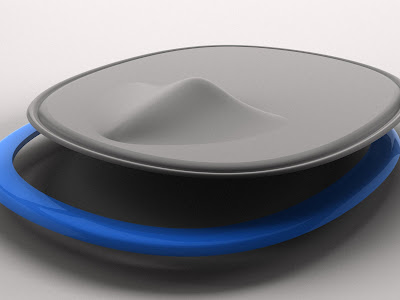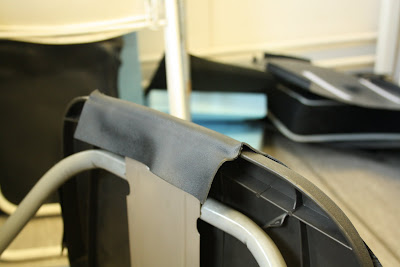So to make this add-on universal the attachment method is the key. The Vac forming plastic is very easy to work with, it keeps its shape, and is cheap so is a good material choice for the base. To secure the base into place I will try and make a seal using RTV silicone, hopefully by doing this it will make a secure joining force between the chair and the base. The silicone has frictional qualities and creating a seal, theoretically it will create a small vacuum as force is applied to it (the user sitting on the add-on).





To attempt to create this seal I used a router to cut a small indent 5mm deep into a piece of MDF, this being the mould for the Silicone. I then took a scrap piece of plastic and heated it under the strip heater. I created a wave within the end of the plastic which I will then cover in silicone. The reason for creating the wave is to join the silicone to the plastic, as the silicone alone does not stick.
The result of this experiment worked very well, however i still need to find some kind of adhesive that will join the plastic to the silicone.





























